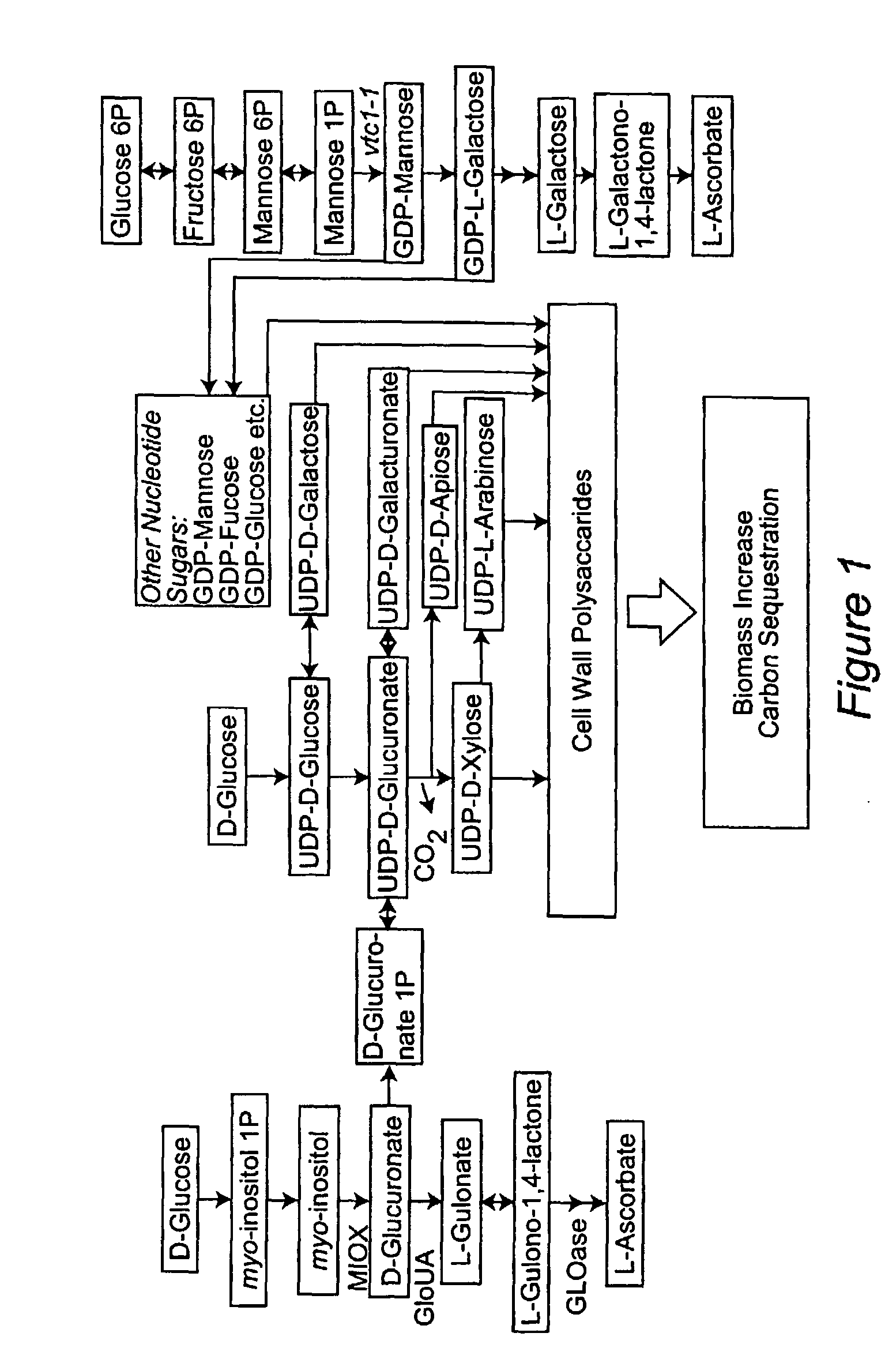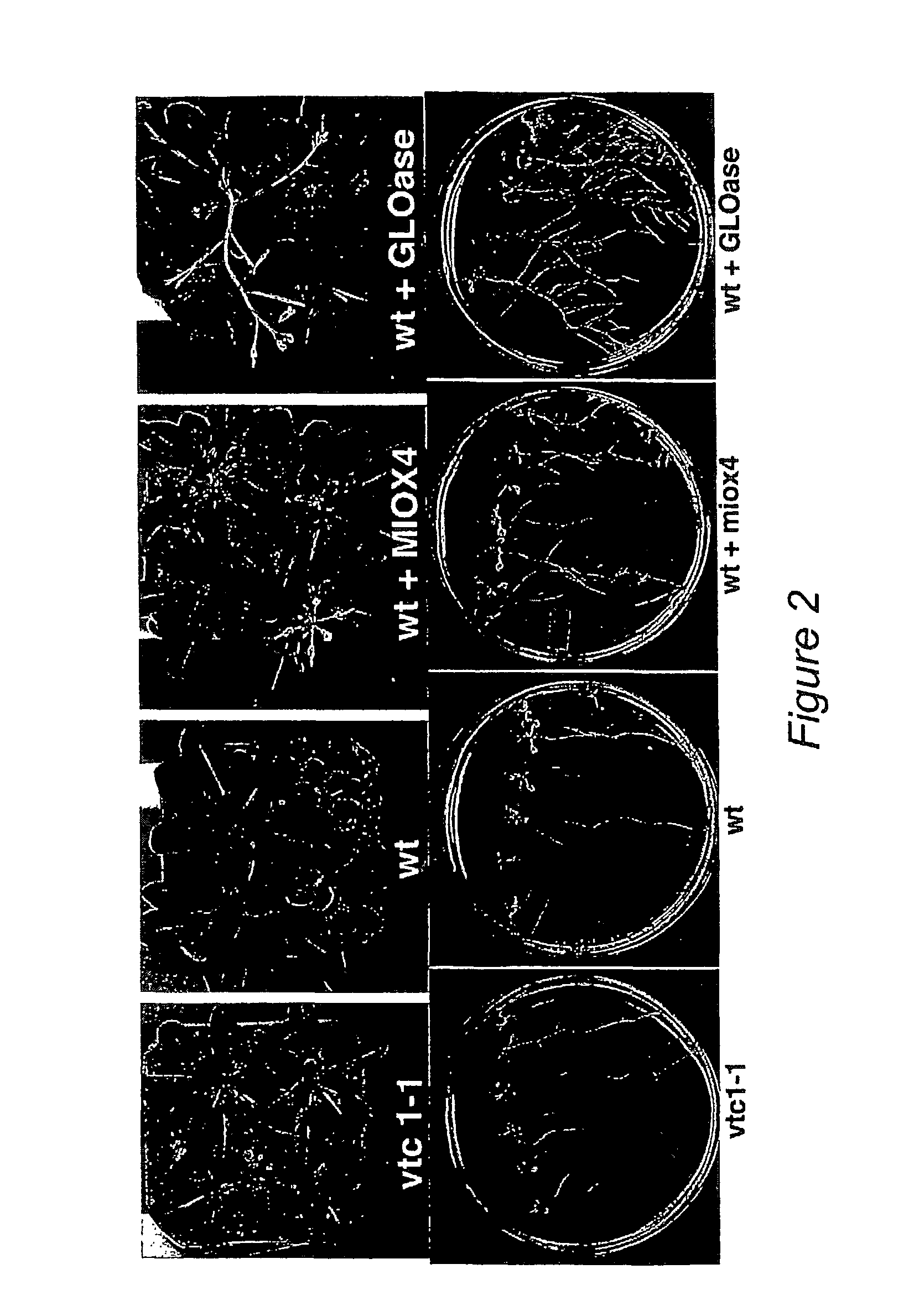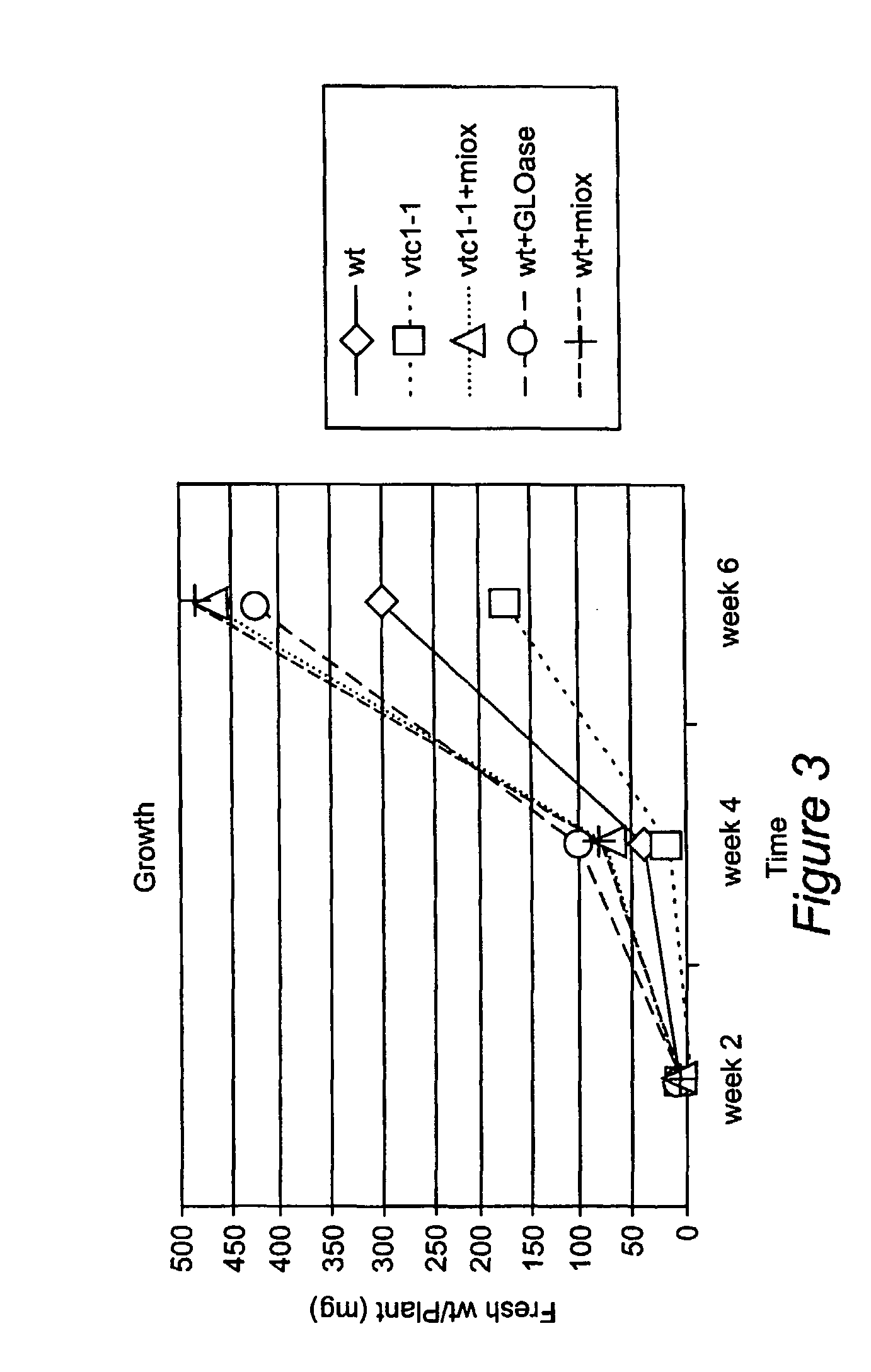Stress tolerant transgenic plants over-expressing ascorbic acid and cell wall synthesis genes
a technology cell wall, applied in the field of stress-tolerant transgenic plants overexpressing ascorbic acid and cell wall synthesis genes, can solve the problems of adverse climate change otherwise known as global warming, outstripping the capacity of poorer nations to feed their citizens, and exploding population growth, so as to increase the sequestration of carbon, increase the biomass of the underground plant, and increase the effect of carbon sequestration
- Summary
- Abstract
- Description
- Claims
- Application Information
AI Technical Summary
Benefits of technology
Problems solved by technology
Method used
Image
Examples
example 1
Increasing Biomass in Plants with Altered AsA Synthesis
[0044]L-Ascorbic acid is a major antioxidant molecule, an essential cofactor for several important metal-containing enzymes and is implicated in control of cell division and growth (Smirnoff and Wheeler, 2000; Davey et al., 2000; Arrigoni and de Tullio, 2002). Although AsA plays numerous critical roles in plant growth and development, a biosynthetic pathway for this versatile compound was not elucidated until 1998 (Wheeler et al.). Since that time, several research groups have discovered additional routes for synthesis and a complex network for producing ascorbic acid is now recognized. The major pathways include: D-mannose / L-galactose (Man / Gal) (Wheeler et al., 1998), D-galacturonate (Agius et al., 2003), and myo-inositol (MI) (Lorence et al., 2004). In addition, in a branch pathway of the Man / Gal route, UDP-mannose-3,5-epimerase appears to function under stress conditions (Wolucka and van Montagu, 2003).
[0045]The MI route to a...
example 2
Increasing Stress Tolerance in Plants with Altered AsA Synthesis-Cell Wall Synthesis Network Gene Expression
[0053]Plants must coordinate metabolism and growth between various cells, tissues and organs; and, since they lack motility plants require built-in defenses against both biotic and abiotic stresses. In addition, plant cell metabolism is highly sequestered into membrane-bound organelles and primary metabolism is characterized by redundancy with there often being multiple routes leading to the same end.
[0054]As an antioxidant, elevated AsA may provide protection against a variety of stresses including air pollution, extreme cold or hot temperatures, photo-oxidation, and osmotic stress.
[0055]Experiments carried out with Arabidopsis plants that over-express the MIOX4 gene showed that the transgenic plants are tolerant to concentrations of exogenously applied salt (150 mM NaCl) that kills or severely damages wt plants. Typical results are shown in FIG. 6, where wt plants watered no...
example 3
Identification and Cloning of Plant Glucuronic Acid Reductase (GlcUA Reductase)
[0064]There is evidence of the operation of at least two biosynthetic pathways for AsA in plants: the mannose / L-galactose pathway and a D-galacturonic acid pathway. In addition, a branch route that leads to the synthesis of intermediates also common to the “animal vitamin C pathway” has been recently described. Evidence for an additional route for AsA formation using myo-inositol (MI) as the initial substrate is known. A MI oxygenase (miox) gene was identified in chromosome 4 (miox4) of Arabidopsis thaliana ecotype Columbia, and its enzymatic activity was confirmed in bacterially expressed recombinant protein (Lorence et al., 2004). MIOX is an enzyme containing non-heme iron that catalyses a four-electron oxidation with the transfer of only one atom of oxygen into the product D-glucuronic acid (GlcUA). There are only two additional enzymatic steps necessary for the conversion of GlcUA to AsA. The first of...
PUM
| Property | Measurement | Unit |
|---|---|---|
| humidity | aaaaa | aaaaa |
| temperature | aaaaa | aaaaa |
| stress tolerance | aaaaa | aaaaa |
Abstract
Description
Claims
Application Information
 Login to View More
Login to View More - R&D
- Intellectual Property
- Life Sciences
- Materials
- Tech Scout
- Unparalleled Data Quality
- Higher Quality Content
- 60% Fewer Hallucinations
Browse by: Latest US Patents, China's latest patents, Technical Efficacy Thesaurus, Application Domain, Technology Topic, Popular Technical Reports.
© 2025 PatSnap. All rights reserved.Legal|Privacy policy|Modern Slavery Act Transparency Statement|Sitemap|About US| Contact US: help@patsnap.com



